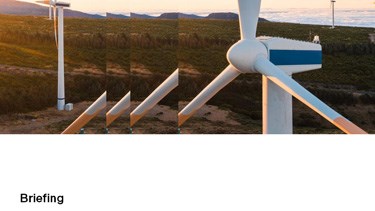17th sanctions package instead of ceasefire: EU adopts new sanctions package in response to the ongoing war of aggression against Ukraine
A. Background
The entry into force of the 17th EU sanctions package marks a renewed increase in economic pressure on Russia by the EU.[1] However, the newly adopted package does not include the sweeping tightening of sanctions that had been threatened in the event of a ceasefire failing to materialise. Instead, the 17th sanctions package introduces no substantial new measures, but primarily extends existing prohibitions and strengthens efforts to prevent circumvention. In addition to listing additional persons and entities, the focus is on action against the Russian “shadow fleet”, which Russia uses to circumvent the oil embargo.
B. Oil sector: Targeting the “shadow fleet”
Following the 15th sanctions package, which had already targeted the Russian shadow fleet, this area remains a priority in the latest round of sanctions. The 17th sanctions package expands the sanctions list by 189 additional ships, all now subject to both a ban on port access and services (Article 3s read in conjunction with Annex XLII of Regulation (EU) No. 833/2014). This means that a total of 342 Russian tankers are now on the sanctions list. The purpose of these measures is not only to counteract the circumvention of existing export bans, but also to reduce the significant risks to maritime transport and the environment posed by these dilapidated tankers.
C. Additional listings of persons and entities
Moreover, the 17th sanctions package adds further persons and entities to the annexes of the relevant sanctions regulations.
Annex IV of Regulation (EU) No. 833/2014 now lists 31 entities that support the Russian military-industrial complex or are involved in the circumvention of sanctions. This means that under Articles 2 (7) and 2a (7), export authorisations for listed dual-use goods and goods listed in Annex VII of the Regulation are restricted with regard to these entities. In addition, the newly listed entities are now affected by the ban on the sale, supply, transfer and export of these goods pursuant to Article 2b (1).
Annex I of Regulation (EU) No. 269/214 has been supplemented by 75 additional listings, including 17 persons and 58 entities responsible for actions that undermine the integrity and independence of Ukraine. The listings are intended to weaken the Russian military and defence sector in particular, as well as the support for the shadow fleet. They also include certain entities from third countries ‒ such as Turkey, Vietnam or the UAE ‒ that indirectly contribute to Russia’s military and technological enhancement.
D. Further restrictions on access to military technology
In addition, the new sanctions package extends restrictions on goods that could contribute to the strengthening of Russia’s military and technological enhancement or the development of its defence and security sector through new listings in Annex VII of Regulation (EU) No. 833/2014. From now on, chemical precursors for energetic materials – such as sodium chlorate, potassium chlorate or aluminium powder – will be subject to stricter export and transfer restrictions. The measures also cover spare parts and components for high-precision CNC machine tools, such as ball screw drives and rotary encoders. This is intended to prevent the development and strengthening of the Russian defence and security sector.
E. Outlook
The EU’s stance remains clear: the war against Ukraine must be ended as quickly as possible. To this end, economic pressure on the Kremlin is to be further increased. The next sanctions package is therefore already foreseeable.
Companies must review the new regulations and adapt their internal compliance processes accordingly to avoid sanction violations. In particular, companies should pay close attention to the expanded restrictions on dual-use goods.
In any case, the EU is sending a clear signal with the new sanctions package: as long as Russia continues its attack on Ukraine, additional sanctions will follow.
[1] Council Regulation (EU) 2025/932 amending Regulation (EU) No. 833/2014 (entry into force on 21 May 2025) and Council Implementing Regulation (EU) 2025/933 amending Regulation (EU) No. 269/2014 (entry into force on 20 May 2025).
Well
informed
Subscribe to our newsletter now to stay up to date on the latest developments.
Subscribe now










